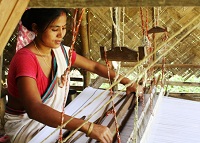FW
The Arab Brazilian Chamber of Commerce (ABCC) says Brazilian exports of textiles and clothing to the Arab region surged during the first two months of 2017, increasing 87.5 per cent compared the same period in 2016. The huge demand for synthetic fabric and sisal rope used in ships and rigs led to an increase in total sales which touched $3 million up from $1.6 million in January and February 2016,.
The Brazilian Textile and Apparel Industry Association (ABIT) reported sales from rope exports accounted to $1 million, on the other hand beachwear, textile yarns and inner garments also rose during the two months. Middle East continue to be one of Brazil’s largest market for clothing, particularly for segments such as party wear, children’s and beach wear. As per ABIT’s latest data, the UAE has the highest imports of Brazilian textiles and clothing during this period, followed by Algeria, Egypt, Morocco, and Lebanon.
Statistics reveals companies which participated in the program expanded their exports to Arab countries by 40 per cent in 2016, valued at $2.9 million in 2015 to $4.1 million in 2016. Michel Alaby, Secretary General and CEO, ABCC points out that Brazil’s textile exports performance during the first two months of the year reveals the steady growth of the country’s market share as the Arab world continues to look for quality materials, not only in raw materials but also with finished goods.
He points out Arab consumer have a discerning taste for luxury and exclusivity in clothing and apparel and this segment remains promising for the Brazilian export sector.
Asia Pacific is home to more than 40 million fashion industry workers, yet for the vast majority, wages remain at levels well below what is needed to lift themselves out of poverty. The proportion of companies looking to improve wages continued to rise from 11 per cent in 2013 to 42 per cent this year. However, in most cases, wages were still below a living wage level and only applied to a portion of workers.
Since 2013, there has been a 30 per cent improvement in companies tracing second tier suppliers, while two and a half times more companies trace raw materials suppliers. These are some of the findings released by Baptist World Aid Australia.
Just seven per cent companies know where their cotton is coming from. Baptist World Aid urges brands to share this information because if they don’t disclose these list, or policies to mitigate worker exploitation, consumers won’t know their suppliers. More than 300 fashion brands have failed to lower the risk of worker exploitation in their global supply chains. The number of companies publishing full supplier lists has risen from 16 per cent to 26 per cent since last year. This year, Baptist World Aid created an online grading tool so consumers can easily search for their favorite brands and their related grades.
"If export promotion councils start promoting Indian artisans on the global map with a strong push, then their growth can get a big boost. Delhi, Jaipur, or Lucknow’s local cloth and garment markets are always teeming with Europeans in search of unique Indian designs. Many are entrepreneurs bulk-buying cloth and dress materials, fashion accessories, and furnishings for resale in Europe, at a substantial profit."
If export promotion councils start promoting Indian artisans on the global map with a strong push, then their growth can get a big boost. Delhi, Jaipur, or Lucknow’s local cloth and garment markets are always teeming with Europeans in search of unique Indian designs. Many are entrepreneurs bulk-buying cloth and dress materials, fashion accessories, and furnishings for resale in Europe, at a substantial profit. The high costs of doing organised business and that too abroad has challenged the possibilities of artisans and clearly an opportunity is missed to create thousands of sustainable livelihoods that could go a long way in reducing poverty.
A big market waiting to be tapped

Statistics show that the rough size of this market is between $600 to $800 billion. If India’s artisans could capture even a tenth of this market and extract a fair value from it say 50 per cent of the final price of the product as opposed to the current 5-10 per cent, it would result in $30 billion of new exports and around six million sustainable livelihoods. In fact, many ‘global’ lifestyle brands from Switzerland or Scandinavia started out as small enterprises which creatively used product differentiation to climb the value chain.
Empowering the inherent creativity of artisanal genius would be a real example of grassroots ‘startup’ India. Indian foreign trade policy needs to work its way to promote such talent globally. We do not have any comprehensive scheme that actually helps the unorganised and small producers to export. Since the focus of foreign trade policy is to give small fiscal ‘incentives’ to different categories of exported products, it just equalises differences in cost and productivity vis-à-vis India’s competition.
A ‘startup’ exporter needs an all-encompassing support. They need to be made aware about consumer trends and product differentiation. For instance, using filigree silver to make high-end mobile-phone covers. They need access to low-cost production centres that help with standardisation and packaging. Support on omni-channel marketing to final consumers using social media and e-commerce market places and logistics would be another key area of intervention. Access to credit and formal banking channels is also the need of the hour. These are all pre-export requirements. How does a post-export incentive actually help competitiveness or bring those who are not competent and require hand-holding into play?
Learning from the best in class
A new foreign trade policy could target artisanal entrepreneurship as the first step in developing a new structure for incentivising exports from India, one that helps startups and innovation, and extracts maximum value from global value chains, taking cue from global best practices. Sweden’s export credit guarantee institution provides support with market intelligence and product placement to SMEs. A new MoU between DHL and International Trade Centre helps African SME exporters with e-commerce product placement and logistics.
A more radical model is HAX, a support and consultancy service for hardware startups that leverages the low-cost manufacturing cluster of Shenzhen to help develop and place products for global entrepreneurs. The pay-off for HAX depends on the success of the entrepreneurs they support, and thus they have a full stake in ensuring the success of the end product. HAX project teams handhold the startup right from the product conceptualisation stage to the final product placement. HAX represents a disruptive change in how a small manufacturer with the right product idea can crack the global market with very little financial resources.
So is it possible to replicate such model for Indian artisans? The pay-offs to the council would be tied to the export success of startup clients, and the councils would be expected to hire private sector expertise in areas ranging from product conceptualisation and design, to placement and logistics. The board of the council would have representation from both artisans and the venture capital industry. Salaries would be incentive-based, and the direct result of the export success of startups that the particular set of employees helped incubate.
This could start it as a pilot project. Assume the ministry of commerce working actively to create an artisanal ‘startup’ hub in Jaipur with significant seed funding, reaching out to India’s artisan groups and connecting them with a well-developed, expert venture capital community. An active participation from global logistics companies and e-commerce marketplaces through strategic tie-ups such as the one between DHL and International Trade Centre would add to the growth. In five years, we could create six million good jobs and our cities can truly become the luxury capital of the world.
Workers in Bangladesh’s garment industry will be imparted fashion and design skills to suit the choice and taste of foreign buyers. The percentage of skilled workforce in the country is 26 at the moment and by 2020, this figure is expected to grow to 65 per cent. The country hopes to eventually export quality technicians and skilled manpower in different fields to other countries instead of importing them.
Bangladesh began giving cash incentives on garment exports to emerging markets to offset the fallout from the financial meltdown the world faced in 2007. These incentives on export to non-traditional markets drove growth over the years. Subsequently, exports to India, China, Russia, Japan, South Africa, Turkey, Brazil, Chile, Mexico, South Korea, Malaysia, Australia and New Zealand started to rise.
Cash incentive for apparel exporters was five per cent in 2009-10, four per cent in 2010-11 and two per cent in 2011-12. They still receive a two per cent incentive for exports to new destinations. One of the factors driving Bangladesh’s textile and garment industry over recent years is the growing foreign direct investment in the industry. The country’s cheap labor, preferential location in the heart of Asia-Pacific and government support are some of the reasons.
"For long, ‘Asian Tigers’ typically referred to Hong Kong, Singapore, South Korea and Taiwan. The four countries experienced rapid growth between the 1960s and 1990s. But now Bangladesh is emerging strong, as the World Economic Forum pointed out. The Bangladesh economy has been one of the top performers in Asia over the past decade, averaging annual growth of more than 6 per cent.
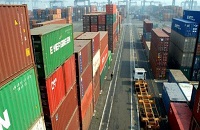
For long, ‘Asian Tigers’ typically referred to Hong Kong, Singapore, South Korea and Taiwan. The four countries experienced rapid growth between the 1960s and 1990s. But now Bangladesh is emerging strong, as the World Economic Forum pointed out. The Bangladesh economy has been one of the top performers in Asia over the past decade, averaging annual growth of more than 6 per cent. Much like Hong Kong, Singapore, South Korea and Taiwan during the industrialisation of their economies, most of the growth that Bangladesh has experienced has come from garment exports, which the CIA World Factbook says accounts for more than 80 per cent of its exports.
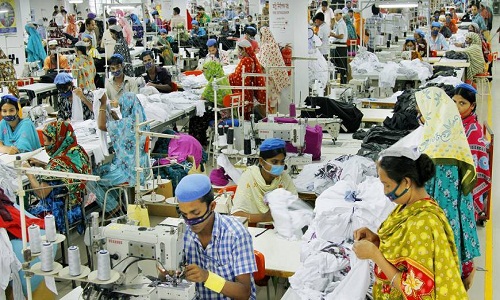
Gareth Leather and Krystal Tan, Asia economists, Capital Economics, wrote Bangladesh has picked up about two - thirds of China's low-end manufacturing market share in Europe. But if Bangladesh is to reach the government's ambitious growth target of 8 per cent a year by 2020, it is essential that it starts to diversify out of the garment trade into other sectors, such as electronics and other consumer durables, where there is more scope to add value.
Bangladesh reigning high
Hasnain Malik, Head – Frontier Markets Equity Strategy, MENA and South Asia Research, Exotix Partners, says the market is being powered higher by earnings growth, local interest in equities, and increasing foreign investor interest. Malik believes there is a lot to like about the market's fundamentals: Domestic political stability; geopolitical support from regional powers China and India; macroeconomic growth and currency stability; fast-paced urban growth and extreme population density; and almost all of the 20 biggest publicly traded companies offer direct exposure to Bangladesh's domestic economy.
Where the country is lagging
In order to diversify out of the garment trade, Bangladesh must do two things, say experts. Poor infrastructure makes it difficult to transport goods across the country. Additionally, more than 20 per cent of the population of more than 156 million (about 31 million) aren't connected to the power grid, and companies often have to use their own back-up power generators because of the high susceptibility to blackouts. Those factors, combined with high levels of corruption, make Bangladesh one of the hardest places in the world to conduct business. According to Capital Economics, a lot needs to be done on reducing corruption, simplifying customs procedures, making land acquisition easier, improving private sector companies’ access to credit and making the security situation more stable.
Among the measures the government is planning to introduce include removing red-tape to expedite the process of starting a business (to seven days instead of 19.5 days), issuing construction permits within 60 days (instead of the current 278 days) and reducing the time it takes for a company to be connected to the national grid to 28 days (compared with 404 days at present). There are also plans to simplify property registration, enhance contract enforcement, streamline cross- border trade procedures under a World Bank- sponsored agenda, and digitise tax payments to improve collection. Progress on these fronts would increase Bangladesh’s appeal as an investment destination.
Tamil Nadu has a robust eco-system for manufacturing textiles and garments. Hence, a textile policy will help sustain as well as improve the existing production units in the state. Technology in manufacturing units will improve and make them more energy efficient.
The area under cotton in Tamil Nadu can also be increased. Madhya Pradesh, Maharashtra, Gujarat and Telangana already have such policies in place, which are bringing textile investments into these states. States that have cotton offer capital subsidies, giving a price advantage to textile units. Textile units in Tamil Nadu have asked for skill development initiatives, promoting the ‘Made in Tamil Nadu’ brand and working towards the growth of the Tirupur, Karur and Erode clusters.
Other possible initiatives are supporting the e-commerce sector and promoting textile items made of manmade fibers. Spinning, handloom, power looms and garments are the four pillars of the textile sector in Tamil Nadu. Tamil Nadu has a strong production base and accounts for about a third of textile production in the country. The state accounts for about 30 per cent of India's export of textile products. The net value addition in the textile industry in Tamil Nadu is about 37.5 per cent, the highest in the country.
UAE’s exclusive sourcing fair, International Apparel and Textile Fair (IATF) for fashion fabrics, clothing accessories took place from April 8 to 10, at Dubai World Trade Center. On display were the spring/summer 2018 collections. In its 6th edition IATF has evolved as a leading brand for buyers in the Middle East and North African region to source the best textile, fabric, accessories and prints from international manufacturers and mills. There were 100 exhibitors from several countries around the world at the fair. Exhibitors were mainly from Turkey, China, Italy, Spain, India, UK and more.
The 6th edition of International Apparel and Textile Fair attracted 2,980 buyers who were mainly from the UAE and GCC region. A number of visitors came all the way from Oman, Saudi Arabia, Lebanon, Kuwait, and Qatar. The United Arab Emirates is now becoming the world’s leading center for textile industry automation with the presence of about 200 apparel manufacturing companies.
Dilip Nihalani IATF’s show director said the focus is on bringing in and introducing prominent manufacturers from all across the globe to clothing and textile buyers and retailers all over the MENA region. UAE is the 3rd largest country in terms of textile exports and is the largest sector of the Middle East. IATF is a bi-annual event being organized by Nihalani events management. The latest IATF edition has showcased spring/summer 2018 pre-collections and autumn/winter 2018 highlights.
Indorama Ventures, the Bangkok-based chemicals maker controlled by the Lohia family, is in initial talks with the Chatterjee Group (TCG) to buy a stake in Haldia Petrochemicals Ltd (HPL). The plant was commissioned in 2000 and the company is one of the largest in India in terms of production capacity. It is not yet decided whether Indorama will acquire a part of TCG’s 48 per cent stake or also from other shareholders as well, which also includes Tata Group, Indian Oil Corp.
TCG has acquired a majority stake in Mitsubishi Chemical Corp.’s Indian subsidiary, MCC PTA India, for close to $48 million last year. The distressed assets deal rescued the ailing MCC PTA, a producer of purified terephthalic acid, or PTA from potential closure as Mitsubishi Chemical decided to scale back investments in commodity chemicals such as PTA to focus on other businesses.
Indorama Ventures formed an equal joint venture with Kolkata-based Dhunseri Petrochem to produce polyethylene terephthalate (PET) resins, a raw material used in textile and plastics industry in September. Dhunseri Petrochem’s PET resin business with a 480,000 tonnes per annum plant in Haldia, was transferred to the newly formed company Dhunseri Petglobal, according to the agreement.
It was reported, TCG had submitted a proposal to set up a refinery in Haldia and would invest up to Rs 20,000 crores for the project. Significantly, a refinery was part of the original plan when HPL was being built in the 1990s.
The Apparel Training and Design Centre (ATDC), India’s largest quality vocational training provider for the apparel sector hosted a part of admission awareness campaign for the BVoc courses in Apparel Manufacturing and Entrepreneurship, Fashion Design and Retail and will be organising free creative workshops at ATDC centres across the country. The first workshop will be held on April, 28, 2017 at ATDC Gurgaon. The main aim of the workshops is to enhance knowledge and creativity of fashion and develop interest on creating decorative textile and other articles. According to the company nowadays, a lot of pattern designs are now done using computer supported design software packages. The one-day creative workshop on ‘Fashion Going Digital’ will also focus on the impact of digital media in fashion. The unique ‘machine and man’ combination for a better look and feel of fashion designs will go a long way now.
From fashion design to apparel manufacturing, digital interference will be the key element for successful business. With the popularity of computer aided workflows a lot of fashion designers have started using computer graphic software packages to develop designs. In the apparel manufacturing sector also one can see numerous new techniques being executed.
The B.Voc courses at ATDC centres are regular Bachelor of Vocational Education program which is jointly offered by ATDC and Rajiv Gandhi National Institute of Youth Development (RGNIYD).
"Started as an extension to Macho, Sporto has been receiving tremendous traction from consumers. Having established its presence in almost 1,000 stores, the company sees this as just the tip of the iceberg. Navinn Seksaria, Director, JG Hosiery, in an interaction with Inside Fashion, talks about his expansion plans and the company’s growing expanse in rural markets and small towns, which he candidly calls are no more ‘small’, as they possess humungous potential."
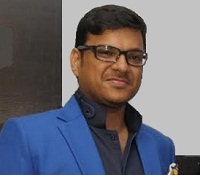
Started as an extension to Macho, Sporto has been receiving tremendous traction from consumers. Having established its presence in almost 1,000 stores, the company sees this as just the tip of the iceberg. Navinn Seksaria, Director, JG Hosiery, in an interaction with Inside Fashion, talks about his expansion plans and the company’s growing expanse in rural markets and small towns, which he candidly calls are no more ‘small’, as they possess humungous potential.
Your brand is established well in intimate apparels. Take us through the brand’s journey so far
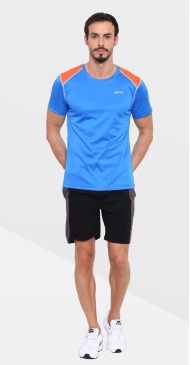
Sporto started as an extension to Macho, one of our mid-premium men’s innerwear brands. Sports cum casual wear, has been the trend in recent times. Hence, we started with gym vests as an extension to Macho. It got tremendous response and we decided to scale up and offer the full range of casual wear and sportswear. We launched a TVC last year and new distribution channels.
We have a whole range of intimate apparels encompassing leisure and sportswear. The product range includes T-shirts, shorts, capris, track pants in regular collection. Apart from that, there is an athlete collection made from ‘Fast Dry’ fabrics. In total, there are almost 40 products. Our target customers are men in the age group 16 to 35 years in A & B segments.
Do you think growth now centers around small towns and it’s important for brands to focus on them?
Small towns are no more ‘small’. They are almost as big as some cities were just a decade back. All towns and cities have immense potential and with the presence of media and Internet almost everywhere, it is becoming one common market. Since Sporto targets mid-premium segment, we are getting equally good response from cities as well as towns. From sales volume point of view, Mumbai vs RoM (Rest of Maharashtra), few years back, was around 3:2 or 1:1, now with growth of smaller towns1, the scales are tilting and RoM is giving us more volumes.
What are the growth, opportunities and challenges in small towns for apparel business.
Small towns have lesser brand-crowd, hence entry barriers are easy. They have good consumption as well. What is challenging is getting the right distribution partner. With good products and networking that can be overcome in a short time. Talking about competition from unbranded players, the unorganised sector is present in all markets, hence, not necessarily in small towns alone. But it affects only the economy segment.
What is the consumer’s understanding of fashion segments in small towns?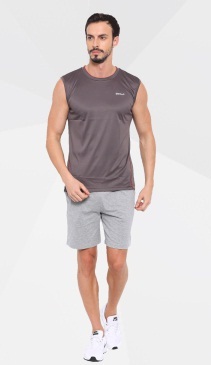
With the spread of satellite channels and Internet penetration, the fashion space is becoming more uniform. The consumer in Kolhapur is more updated and aware about latest trends. The gap between him and Mumbai consumer have become nil or negligible. This is good for brands as they can offer better product portfolio to all consumers. It also makes brands work harder as they always need to keep themselves updated.
How are you creating brand awareness in small towns? Tell us about your branding strategies.
TVC is the best media to create universal reach. But there needs to be a holistic branding strategy involving all channels of media such as outdoor, print and digital and social media. It has come as a surprise to us that smaller towns are ready to pay equivalent or better prices, there is no price constraint if the product is good.
How many EBOs, MBOs and LFS do you have? What is the share of earning in percentage terms from each format?
We are primarily focusing on the MBO segment and have been receiving tremendous response. We have established our presence in almost 1,000 stores, although it is just the tip of the iceberg. As for EBOs, we are not looking at them in this segment. Some regional LFSs have already taken our products and we are in discussion with national LFS.
What do you think is the future of etailing, and brick & mortar formats?
This category is perfectly suited for e-tailing but surprisingly it has not reflected in consumer behaviour. We have a good presence across all e-commerce platforms and e-commerce enabled website. We are getting a good response but feel consumer behaviour will require lot of change to get big numbers. As for our online presence, we are present in Myntra, Amazon and Flipkart. The advantages are obvious that it can establish connect with every nook and corner of the country directly with consumers.
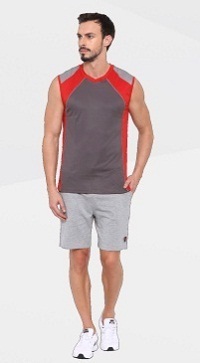
In online retail, consumers expect discounts just like in white goods. But in this segment, the logistics costs become very high due to comparatively low ticket sales value, hence distribution cost gets absorbed in logistics. Further, consumer behaviour is yet to see big change as far as this category is concerned.
Give us details about your new collection, theme, for the season? Nny innovations lined up for this season?
New products are being added, and we are extending the ‘Fast Dry in Tracks’ and shorts too. Apart from men’s wear, we are planning to extend our offering in women’s sportswear too.
Did business meet expectations this season since the brand is new?
After the disruptions of Nov-Dec, business has been robust in the last two months. We have received a good response for our products. We are already present in almost 1,000 stores across the country within a short time.
What are your expansion plans? Do you plan to explore new markets in India and abroad?
We hope to ramp up our distribution fast and target to grow 10 times in next two years. We have a distribution setup in the Middle East where we have received good enquiries. We aspire to clock in Rs 1,100 crores revenue this year. We expect 20-25 per cent consistent growth in the next 4-5 years. We want to make the Indian hosiery industry the global leader. With the potential of talents in engineering, supply chain combined with insights in marketing, and availability of good raw materials, I hope this should be achievable within next decade.
QUOTE
Navinn Seksaria, Director, JG Hosiery
“Since Sporto targets mid-premium segment, we are getting equally good response from cities as well as towns. From sales volume point of view, Mumbai vs RoM (Rest of Maharashtra), few years back, was around 3:2 or 1:1, now with growth of smaller towns1, the scales are tilting and RoM is giving us more volumes.”
“We are primarily focusing on the MBO segment and have been receiving tremendous response. We have established our presence in almost 1,000 stores, although it is just the tip of the iceberg. As for EBOs, we are not looking at them in this segment. Some regional LFSs have already taken our products and we are in discussion with national LFS.”
“We have a good presence across all e-commerce platforms and e-commerce enabled website. We are getting a good response but feel consumer behaviour will require lot of change to get big numbers.”

